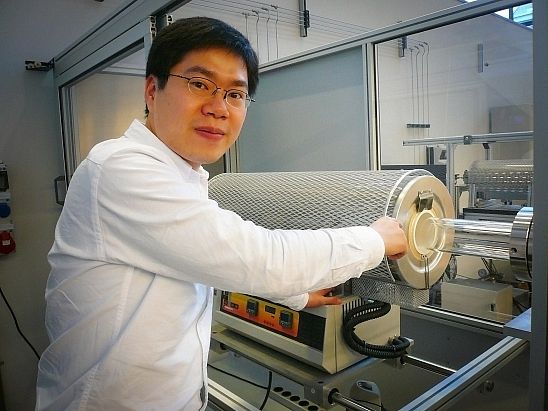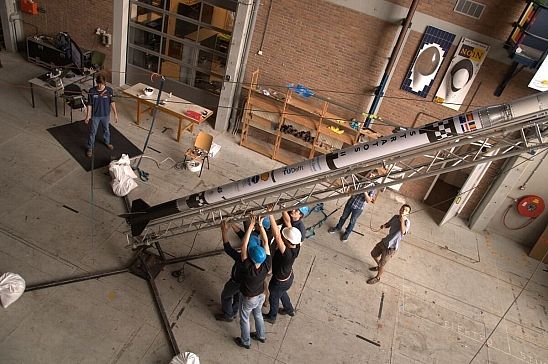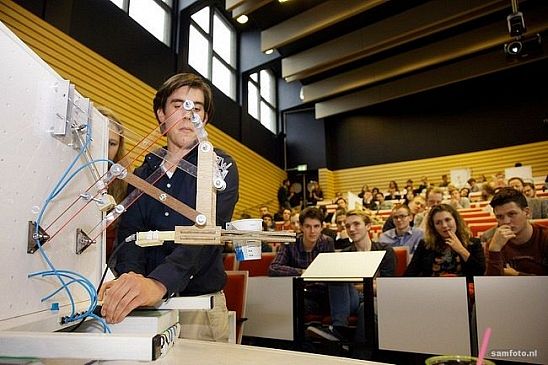A new way to produce graphene, a Russian spy sent home and students about the Paris Climate Summit. These articles featured among the best read in science news from 2015.
 January-March: graphene
January-March: grapheneJanuary-March: graphene
Shou-En Zhu’s promise to make graphene affordable drew an enormous attention. In the months January, February and March 2015 almost 200.000 people clicked the article. In the article ‘Making graphene affordable’ PhD candidate Zhu explained that all you need to make high quality graphene (a single sheet of carbon atoms) is a furnace, natural gas and copper. “You have it in most every kitchen”, he said, while adding that his method would bring down the price of graphene by a factor of thousand in a few years.
April: Beating heart cells
PhD candidate Saeed Koshfetrat Pakazad developed a chip with beating heart cells to screen drugs for side effects. The article ‘Kloppende hartcellen op een chip’ (Dutch) also features professors Lina Sarro (signal processing) and Ronald Dekker who specialises in flexible chips.
May: Roboots
Biomechanical engineers from TU Delft developed a walking aid called the Achilles. The battery-powered exoskeleton adds energy to each step, but it doesn’t make walking any lighter yet. Wietse van Dijk, who developed the Achilles walking boot together with Cor Meijneke at 3mE’s biomechanics lab, said that metabolic studies have shown that activating the robot boots did not reduce the energy expenditure of the test persons.
 June: printable solar cells
June: printable solar cellsJune: printable solar cells
Professor Theo Dingemans patented a new material with the impossible name (EDOT-OMeTPA) that carried the promise of cheap printable solar cells of just 0,2 microns thick with an efficiency of 11 percent. “Our synthesis brings commercial applications within reach”, said Dingemans who develops polymers and new materials at the Faculty of Aeronautical Engineering. “It’s up to designers to find applications for it. Wearable electronics could be one, you could print a solar panel on your tent or even on wood panels.”
July: Things flying around
An airplane without wing flaps, a satellite that uses a gyroscope to remain stable and a drone for search and rescue missions. These are some of the student projects that were presented during the Design/Synthesis symposium. Read more about of it in the popular article ‘As long as it flies’.
August: Spy story
The Technical University of Eindhoven fired a Russian researcher in quantum optics after the Dutch security services warned he was spying for his home country. What information could he possibly have sold? That was the question in the article ‘Fired for spying’.
 September: Into space
September: Into spaceSeptember: Into space
Students from DARE (Delft Aerospace Rocket Engineering) had redesigned the Stratos II rocket, aiming for a 50-kilometre altitude. The article describes their preparation for the launch in Spain which took place on 17 October. The rocket fell short of the original goal, but reached a new record altitude of 21457 metres.
October: Smart flaps
TU Delft researcher Lars Oliver Bernhammer had designed an autonomous flap for smart wind turbines that functions as an add-on for load alleviation purposes. The article states that offshore wind turbines may profit most from the add-on.
 November: Robot hands
November: Robot handsNovember: Robot hands
Making a gripper for a robot that can fix and lift a paper coffee cup is harder than it may seem. The article Click, Whack and Wallop (in Dutch) describes the presentation by first-year students in mechanical engineering on Friday November 6th, 2015.
December: Climate control
Fifteen TU Delft students participated in the youth version of the Paris Climate Conference on November 26-28, 2015. They came back less optimistic than they went. In the article they said they don’t think that the climate conference would succeed in limiting global warming to 2 degrees. Eventually of course the 196 countries did agree on that goal, but they left the binding targets for later.


Comments are closed.